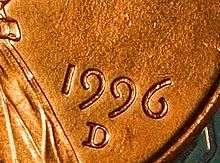Text figures


Text figures (also known as non-lining, lowercase, old style,[1] ranging, hanging, medieval, billing,[2] or antique[3] figures or numerals) are numerals typeset with varying heights in a fashion that resembles a typical line of running text, hence the name. They are contrasted with lining figures (also called titling or modern figures), which are the same height as upper-case letters.[4][5]
Design
In text figures, the shape and positioning of the numerals vary as those of lowercase letters do. In the most common scheme, 0, 1, and 2 are of x-height, having neither ascenders nor descenders; 6 and 8 have ascenders; and 3, 4, 5, 7, and 9 have descenders. Other schemes exist; for example, the types cut by the Didot family of punchcutters and typographers in France between the late 18th and early 19th centuries typically had an ascending 3, a form preserved in some later French typefaces. A few other typefaces used different arrangements. Sometimes the stress of the '0' is made different from a letter 'o' in some way, although many fonts do not do this.[6][7]
High-quality typesetting generally prefers text figures in body text: they integrate better with lowercase letters and small capitals, unlike runs of lining figures. Lining figures are called for in all-capitals settings (hence the alternative name titling figures), and may work better in tables and spreadsheets. During the period of transition from text figures to lining, a justification for the old system was that the height differences helped distinguish similar numbers, while a justification for lining figures was that they were clearer (being larger) and that on uses such as page numbers they looked better giving all page numbers the same height.[6][8] Amusingly, as several later writers have noted, the printer Thomas Curson Hansard in his landmark textbook on printing Typographia describes the new fashion as 'preposterous', but the book was printed using lining figures and the modern typefaces he also criticised throughout.[6][9]
Although many traditional fonts included a complete set of each kind of numbers, early digital fonts (except those used by professional printers) include only one or the other. Modern OpenType fonts generally include both. The few common digital fonts that default to using text figures include Candara, Constantia, Corbel, Hoefler Text, Georgia, Junicode, some variations of Garamond (such as the open-source EB Garamond), and FF Scala. Palatino and its clone FPL Neu support both text and lining figures.[10][11][12]
History
As the name medieval numerals implies, text figures have been in use since the Middle Ages, when Arabic numerals reached 12th century Europe, where they eventually supplanted Roman numerals.
Lining figures came out of the new middle-class phenomenon of shopkeepers’ hand-lettered signage. They were introduced to European typography in 1788, when Richard Austin cut a new font for type founder John Bell, which included three-quarter height lining figures. They were further developed by 19th-century type designers, and largely displaced text figures in some contexts, such as newspaper and advertising typography.[13]
The use of text figures suffered further setbacks for most of the 20th century, amid attempts to do away with typographic case altogether, and they became rarer still with the advent of phototypesetting.[14] Fine book faces for mechanical typesetting still used text numerals well into the 20th century, and they began to make a strong comeback.
Text figures are not encoded separately in Unicode, because they are not considered separate characters from lining figures, only a different way of writing the same characters. However, many fonts intended for professional use offer both text and lining figures, either using OpenType features to select between them or using Unicode's Private Use Area for one or the other set. Adobe's "Pro" fonts used to do both (using private use codepoints U+F643 to U+F64C to encode text figures), but the most recent ones only use OpenType features.
See also
References
- ↑ University of Chicago Press (2010). "Appendix B: Glossary". The Chicago Manual of Style (16th ed.). Chicago: University of Chicago Press. pp. 891, 899.
- ↑ Birdsall 2004, p. xi
- ↑ Birdsall 2004, p. 186
- ↑ Bringhurst 1992, p. 36
- ↑ Saller, Carol (March 14, 2012). "Old-Style Versus Lining Figures". Lingua Franca. The Chronicle of Higher Education.
- 1 2 3 Tracy, Walter. Letters of Credit. pp. 68–9.
- ↑ Bergmann, Christoph; Hardwig, Florian. "Zero vs. oh: Strategies of glyph differentiation". Isoglosse. Retrieved 12 September 2016.
- ↑ Hansard, Thomas Curson (1825). Typographia, an Historical Sketch of the Origin and Progress of the Art of Printing. pp. 430–1. Retrieved 12 August 2015.
- ↑ Johnson, Alfred F. (1930). "The Evolution of the Modern-Face Roman". The Library. s4-XI (3): 353–377. doi:10.1093/library/s4-XI.3.353.
- ↑ Devroye, Luc (November 30, 2002). "More on the Palatino Story".
- ↑ Index of /~was/x/FPL Archived April 15, 2011, at the Wayback Machine.
- ↑ (URW)++ Design & Development; Puga, Diego; Stubner, Ralf (March 13, 2008). "FPL Neu Fonts—OpenType Edition".
- ↑ Hansard, Thomas Curson (1825). Typographia, an Historical Sketch of the Origin and Progress of the Art of Printing. p. 430. Retrieved 12 August 2015.
- ↑ Bringhurst 1992, p. 47
Works cited
- Birdsall, Derek (2004). Notes on Book Design. New Haven, CT: Yale University Press. ISBN 0-300-10347-6.
- Bringhurst, Robert (1992). The Elements of Typographic Style. Vancouver: Hartley & Marks. pp. 46–48. ISBN 0-88179-132-6.
External links
| Wikimedia Commons has media related to Text figures. |
- Bergsland, David. "Using Numbers in the Proper Case". DT&G Design.